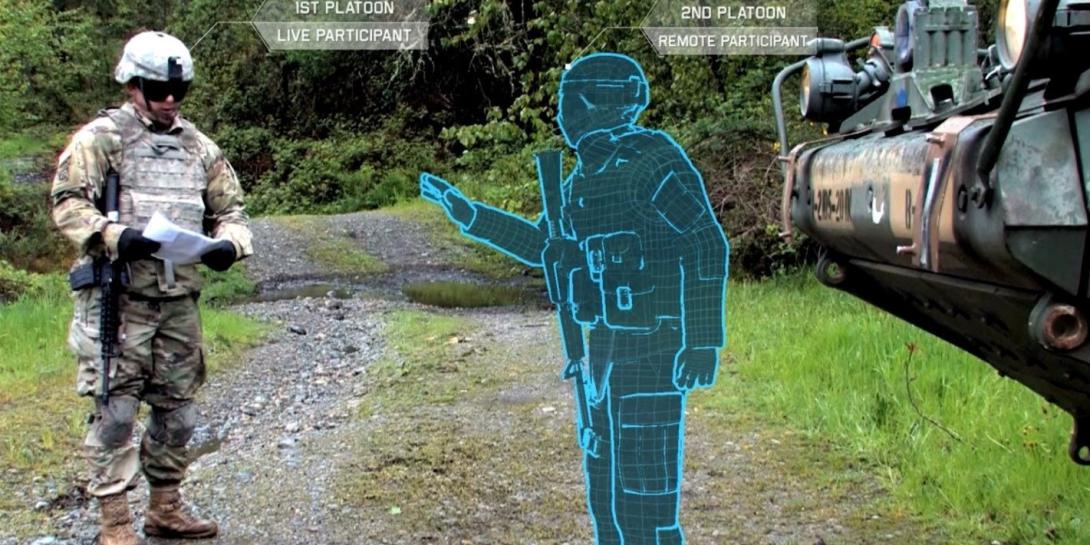TRADOC Commander Outlines Three Training Initiatives
Gen. Paul Funk II, USA, commander of the Army’s Training and Doctrine Command (TRADOC), outlined three training modernization priorities during his keynote speech at a February 16-17 AFCEA TechNet Augusta Virtual Solutions Series event. The initiatives include developing a prototype of the Army Training and Information System, updating ranges and training aids, and linking live, virtual and constructive training.
The three initiatives will allow the Army to leverage data for multidomain operations (MDO) “to enable warfighters and echelons to survive on the modern battlefield,” Gen. Funk indicated.
Gen. Funk, TRADOC Commander: Leveraging data allows the Army to retain data superiority because winning matters. #AFCEATechNet
— George Seffers (@gseffers) February 16, 2021
The first effort is to prototype the Army Training and Information System, or ATIS. The system is “where we hang our doctrine and will enable the sharing of lessons learned from the institutional Army to the operational force,” Gen. Funk said.
“It is the Army’s training knowledge management tool and will bring over 28 separate and distinct stovepiped legacy systems into one integrated training management tool. It will support training management, training schedules and training development” by the end of fiscal year 2023, he added.
The second initiative involves updating various training assets. “Second, we’re updating the Army’s training capabilities, ranges and training aids. An MDO-capable force needs world-class, 21st Century training facilities. TRADOC is managing and updating over 900,000 training aids, over 4,100 ranges and nearly 6.5 million acres of training area,” Gen. Funk reported. “All of these new updates will enable leaders at all levels to train their soldiers on their weapon systems at home station and at our combat training centers. These updates will enable the Army to analyze data, measure effectiveness, and ensure we have an MDO-ready force by 2028.”
The third endeavor is to link the live, virtual and constructed training environments through the use of the Synthetic Training Environment. “The Synthetic Training Environment will provide a single live and digital environment that enables warfighters to conduct individual and collective training on an updated Engagement Skills Trainer and Call For Fire Trainer,” the general said. “These will include an updated training capability with One World Terrain as well as training with the next-generation of constructive simulations to enable improved, collective training at the division and higher echelons.”
Gen. Funk: TRADOC Commander: Our adversaries are also rushing to gain data superiority. Whoever can leverage data better will ultimately gain the military advantage on the battlefield. #AFCEATechNet:
— George Seffers (@gseffers) February 16, 2021
All the efforts, Gen. Funk pointed out, rely on data. “TRADOC recognizes the importance of data, and we remain committed to developing leaders who can lead our formations to fight and win on the battlefields of today and tomorrow. We are working to develop training capabilities that deliver relevant, decisive training in a multidomain environment for the Army,” he asserted. “We must bring the training to the soldier, not the soldier to the training.”
Gen. Funk, TRADOC Commander: We must bring the training to the soldier, not the soldier to the training.#AFCEATechNet
— George Seffers (@gseffers) February 16, 2021
The Army also is updating its training field manual FM 7-0, which should be published in the spring, according to Gen. Funk. “FM 7-0 will emphasize prioritizing training and the use of training management cycles,” he said.
He added that the Army is updating its approach to knowledge management to include simplified access to the Army Training Network and the Digital Training Management System, a refined combined arms training strategy, and access to the Small Unit Leader Tool and Digital Job Book.
During a question-and-answer session following his presentation, Gen. Funk said the updated training manual differs from the 2016 version in its focus on simplicity. “As it turns out, in a more complex world, the one principle of war we need to remember is simplicity. The FM 7-0, the new version that we’re now staffing, simplifies our training doctrine by reintroducing the training management cycle. It also takes on the critical role of the senior leaders and our noncommissioned officers in our training at echelon.”
Gen. Funk, TRADOC Commander: Simplicity is the most important principle of war.#AFCEATechNet
— George Seffers (@gseffers) February 16, 2021
He added that the new manual will be more of a how-to, explaining how to train, how to do assessments and how to do evaluations.
Asked how TRADOC is addressing the importance of the information environment in doctrine and training, the commander noted that “information is an element of national power” and “is also a domain.”
So, the debate on whether or not it should be a warfighting function or be integral to every piece of the warfighting function is what’s raging in our Army right now. Everybody recognizes its importance. Everybody recognizes that we also have to simplify some of the authorities associated with information.”
The growth of open-source intelligence, he said, has created a thirst in the information environment. “You can’t feed that beast enough.”
Regarding the Synthetic Training Environment, Gen. Funk said the Army’s primary challenge is acquiring the data required to recreate realistic virtual environments. “The biggest [challenge] is probably having the access to the terrain at the entity levels that we need to replicate the training environments. Remember, we’re trying to replicate downtown Baghdad to the window, to the doorknob to the access place so that we can train in that environment.”
On a positive note, he added, many of today’s soldiers enjoy providing that information. “The great news is we’ve got soldiers out there who are incredibly skilled at this who do this in their spare time, and they share these models with us. The modeling and sim world is fascinating. These kids love to do this stuff. What’s neat for us is we get to share the fruits of their labor and really replicate world-class training environments.”





Comments